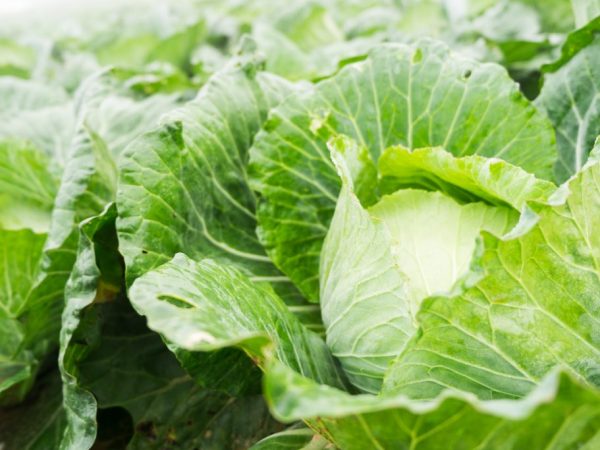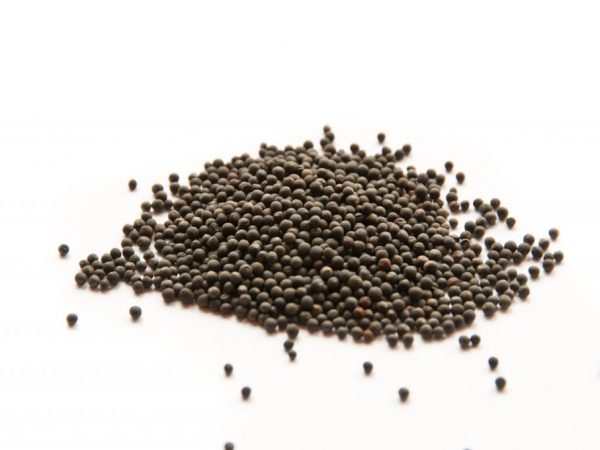Characteristics of the cabbage variety Golden hectare
Cabbage Golden hectare 1432 is an early variety. It is ideal for both agricultural production and home cultivation.

Characteristics of the cabbage variety Golden hectare
Characteristics of the variety
Cabbage Golden hectare has a short growing season - from 100 to 110 days. The seeds are sown in March. The ripening period of full-fledged seedlings is 35-45 days. The harvest period runs from July to August. Productivity from 1 sq. m is 5-8 kg, from 1 hectare up to 900 c. Subject to all the rules of agricultural technology, productivity is 95%.
The variety perfectly tolerates transportation, is resistant to cracking, diseases and insect pests. Shelf life - up to 1 month. It is recommended to be consumed fresh.
Description of the head
The leaves of the Golden Hectare cabbage are rounded, large below, green with a gray tint, smaller, light green above. The outer stump is short, thick, heavily leafy. Heads of cabbage are small and medium in size.
The variety has excellent taste and is rich in beneficial nutrients.
Head structure:
- the shape is aligned, rounded;
- light green color;
- the surface is smooth;
- average weight - 1.5-2.5 kg;
- the color on the cut is white;
- high density;
- the inner stump is short.
Growing and care
According to the description, the cultivation of Golden Hectare cabbage is carried out by sowing. First, seedlings are grown, after which the seedlings are transplanted into open ground. The technique of growing this culture is simple, it is enough to follow some rules.
Selection of quality seeds
From the beginning of March, sowing of seeds for seedlings begins. The mixture of soil for growing seedlings should consist of turf and humus. To enrich the soil with additional microelements, ash is added to this mixture at the rate of 10 tbsp. l. ash per 10 kg of the mixture.
High-quality seeds are selected, for this they are poured for 5 minutes. 3% salt solution. The floating ones are drained together with water, the rest are washed and dried. Selected medium and large sized material is sown.
Treatment

Processing will harden the seeds
If the seeds are not processed (this is indicated on the package), they are processed: they are immersed in water heated to 50 ° C for 20 minutes, then in cold water for 5 minutes. There is another way: the seeds are kept for 1 hour in a solution of garlic (30 g of crushed garlic is dissolved in 0.5 tbsp. Of water). After the seeds are washed and dried well. These activities disinfect the material and increase resistance to fungal diseases.
Landing
Seeds are planted in containers (boxes, cassettes, pots), the soil surface is covered with a film. The first shoots are visible already on the 4th day. Seedling boxes should be in a well-lit place. Watering is carried out moderately, as the soil dries out.
Picking
14 days after seedling germination, the plants from the boxes are transplanted into separate containers or other boxes according to the 5 x 5 cm scheme. During the pick, 1/3 of the main root is cut off.This helps the roots to branch out better, the root gains volume. The sprouts are deepened to the cotyledonous leaves.
Temperature regime
In order for the seedlings to grow strong and develop rapidly, it is necessary to observe the temperature regime. Before the first shoots appear, the room temperature should be 18-20 ° C. After the seedlings emerge, the daytime temperature is kept at 15-17 ° C, and the night temperature is 7-10 ° C.
2 weeks before transplanting into open ground, the seedlings are hardened. At the first stage of hardening, the plants are gradually accustomed to cool air, starting from 2 hours a day.
At the next stage, the seedlings are taken out into the street, making sure that direct sunlight does not fall on the plants, for this they are shaded. For the last few days, the seedlings remain outside. After the appearance of 4-5 leaves, the seedlings are moved to open ground.
Top dressing
During the ripening of seedlings, three fertilizing of vegetable crops is carried out: the first - a week after the pick, the second - 2 weeks after the first, the third - a few days before transplanting into open ground. The seedlings are watered with a solution based on nitrogen, phosphorus and potassium.
Watering
Cabbage is one of the most moisture-loving vegetable crops. Water consumption depends on the type of soil and air temperature, on average young plants consume 2-4 liters of water, and adults - 10-15 liters. At the initial stage of the growing season, water is watered every 3 days, later - once a week. It is also important to loosen the soil, huddle seedlings.
Mulching
When mulching the soil, the number of weeds decreases, the number of irrigations decreases, and water is consumed sparingly. Loosening is not necessary. Mulching helps to increase soil fertility - the yield increases. Time and labor costs are reduced.
Conclusion
The golden hectare is an early variety of white cabbage. It has excellent taste, has an attractive presentation and is immune to disease. Taking good care of your vegetable regularly will help you get a healthy and strong harvest.

